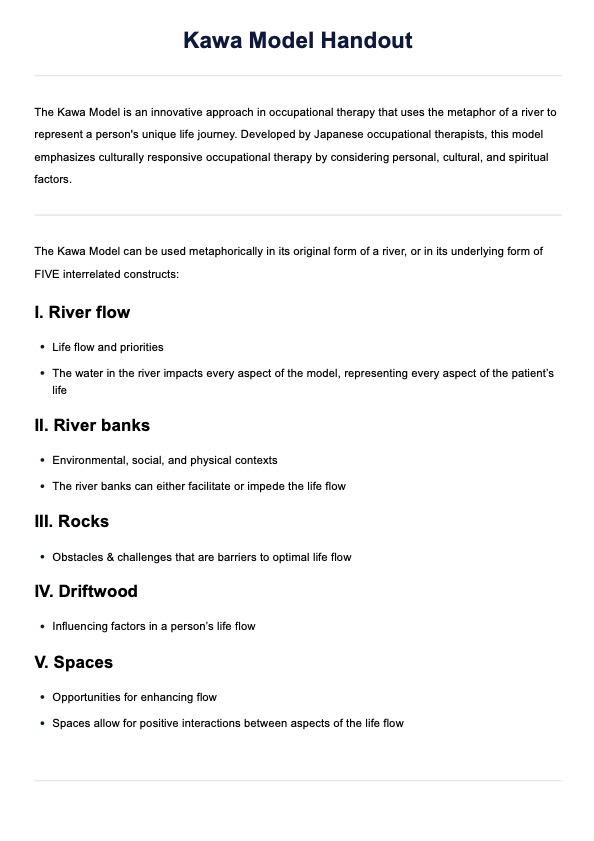The Kawa Model, developed by Japanese occupational therapists, uses the metaphor of a river to represent an individual's life journey. "Kawa" means "river" in Japanese, symbolizing the flow of life and well-being.

Kawa Model
Download Carepatron's free PDF handout and example of the Kawa Model, a holistic occupational therapy method for understanding a person's life flow and challenges.
Kawa Model Template
Commonly asked questions
The Kawa Model of the occupational therapy process involves assessing and addressing personal, cultural, and environmental factors that influence a person's life. This model helps therapists create culturally sensitive and personalized interventions to enhance occupational performance and well-being.
The Kawa Model of goal setting focuses on identifying and overcoming obstacles in the individual's life flow. Therapists and patients collaborate to set realistic and meaningful goals that improve occupational engagement and quality of life.
EHR and practice management software
Get started for free
*No credit card required
Free
$0/usd
Unlimited clients
Telehealth
1GB of storage
Client portal text
Automated billing and online payments











